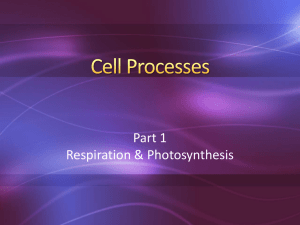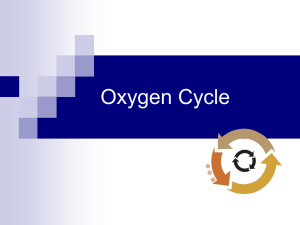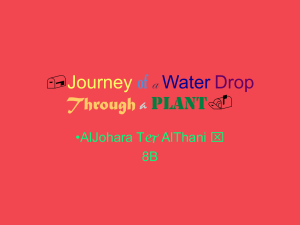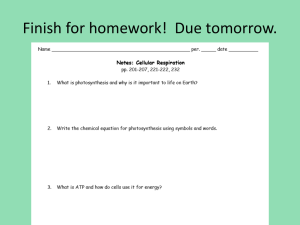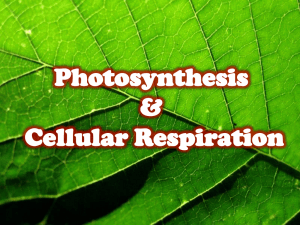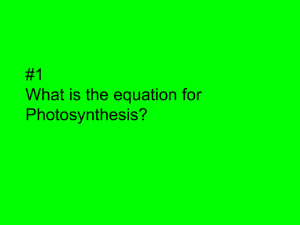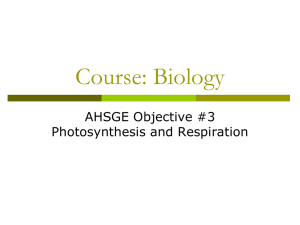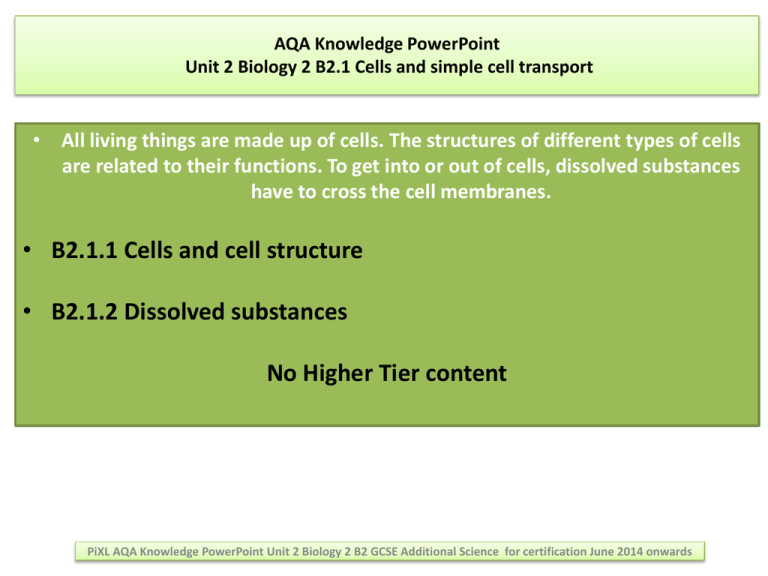
AQA Knowledge PowerPoint
Unit 2 Biology 2 B2.1 Cells and simple cell transport
• All living things are made up of cells. The structures of different types of cells
are related to their functions. To get into or out of cells, dissolved substances
have to cross the cell membranes.
• B2.1.1 Cells and cell structure
• B2.1.2 Dissolved substances
No Higher Tier content
PiXL AQA Knowledge PowerPoint Unit 2 Biology 2 B2 GCSE Additional Science for certification June 2014 onwards
B2.1.1 Cells and cell structure
All living things are made up of cells. The structures of different
types of cells are related to their functions
Part
Function
Plant or
animal
Nucleus
Contains genetic material,
which controls the
activities of the cell
Both
Cytoplasm
Most chemical processes
take place here,
controlled by enzymes
Both
Cell
membrane
Controls the movement
of substances into and
out of the cell
Both
Mitochondria
Most energy is released
by respiration here
Both
Ribosomes
Protein synthesis
happens here
Both
Cell wall
Strengthens the cell
Plant
ONLY
Chloroplasts
Contain chlorophyll,
absorbs light energy for
photosynthesis
Plant
ONLY
Permanent
vacuole
Filled with cell sap to help
keep the cell turgid
Plant
ONLY
Yeast: Yeast is a single-celled organism.
The cells have a nucleus, cytoplasm and a
membrane surrounded by a cell wall.
Bacteria: Single-celled organism.
A bacterial cell consists of cytoplasm and
a membrane surrounded by a cell wall.
The genes are not in a distinct nucleus.
B2.1.1 Cells and cell structure - Specialised cells
Cell
Diagram
Cells are specialised for a particular function.
Structure helps them to carry this function out.
Function
Adaptations
Leaf
cell
Absorbs light for
photosynthesis.
Lots of chloroplasts.
Root
hair
cell
Absorbs water and
mineral ions from the
soil.
Large finger like shapes to increase
surface area.
Sperm
cell
Fertilises an egg
Head contains an enzyme to help
penetrate egg, lots of mitochondria so
egg can swim to sperm.
Red
blood
cell
Carries oxygen to the
cells.
Thin outer membrane so oxygen
diffuses easily, no nucleus so more
room for oxygen.
Goblet (mucus) and cilia cells are found in the lining of
the gut and the tubes into the lungs. They are
specialised to release and move mucus. Helps food
slide down easily in the gut and helps trap dirt and
bacteria before they enter the lungs. The cilia cells
help move the mucus especially in the lungs. Cilia cells
have lots of mitochondria.
B2.1.2 Dissolved substances
Concentration gradient
A difference in
concentration between two
areas next to each other.
Particles will move down
the concentration gradient
High to Low.
The larger the difference in
concentration the faster
the rate of diffusion.
Diffusion is the spreading of the particles of a gas or liquid,
resulting in a movement of particles from a region where
they are of a higher concentration to an area of lower
concentration.
Diffusion can occur in:
Air - smells from perfume etc.
Liquids – tea from a tea bag, dye
in water etc.
Through membranes – small intestines, blood cells etc.
Location
Small intestine
Particles move
From
To
Digested food
products e.g.
glucose
Blood in
Small
capillary of
intestine
villus
Oxygen
Blood
Alveolar air circulating
space
around the
lungs
Lungs
AQA Knowledge PowerPoint
Unit 2 Biology 2 B2.2 Tissues, organs and organ systems
The cells of multicellular organisms may differentiate and become adapted for
specific functions. Tissues are aggregations of similar cells; organs are
aggregations of tissues performing specific physiological functions. Organs are
organised into organ systems, which work together to form organisms.
• B2.2.1 Animal organs
• B2.2.2 Plant organs
No Higher Tier content
PiXL AQA Knowledge PowerPoint Unit 2 Biology 2 B2 GCSE Additional Science for certification June 2014 onwards
B2.2.1 Animal organs
Organisation of a
multicellular organism
cells tissues organs
organ systems
A TISSUE is a group of
specialised cells working
together to carry out a
particular function.
Tissues in the stomach
The stomach is an organ
that contains:
muscular tissue, to churn
the contents
glandular tissue, to
produce digestive juices
epithelial tissue, to cover
the outside and the inside
of the stomach.
The digestive system
An organ system which humans and other mammals have so
they can exchange substances with the environment.
Tissue
Function
Muscular
tissue
Contracts,
bringing about
movement
Pancreas/
salivary
glands
Produce
digestive juices
Stomach
Digests food
Glandular
tissue
Produces
substances such
as enzymes and
hormones
Liver
Produces bile
Small
intestine
Epithelial
tissue
Covers some
parts of the
body
Digest and
absorb soluble
food
Large
intestine
Absorbs water/
produces faeces
Part(s)
Function
B2.2.2 Plant organs
Plants organs
Stem support for the leaves
and flowers. Water and
glucose transported too.
Leaves make the food for
the plant where
photosynthesis happens.
Roots anchor the plant in
the soil, take up water and
mineral ions.
Flowers are reproductive
organs to attract insects.
Tissue
Definition
Epidermal
Covers the plant, contains stomata.
Mesophyl
Where photosynthesis takes place. Contains
palisade cells and spongy layer.
Xylem
Carries water and mineral ions from roots.
Phloem
Carries glucose from the mesophyll to the rest of the
plant.
Stomata
Pores on the underside of the leaf that allow gases
to diffuse in and out.
AQA Knowledge PowerPoint
Unit 2 Biology 2 B2.3 Photosynthesis
Green plants and algae use light energy to make their own food. They obtain the
raw materials they need to make this food from the air and the soil. The
conditions plants are grown in can be changed to promote growth.
• B2.3.1 Photosynthesis
No Higher Tier content
PiXL AQA Knowledge PowerPoint Unit 2 Biology 2 B2 GCSE Additional Science for certification June 2014 onwards
B2.3.1 Photosynthesis
Plants convert glucose into
starch and store it.
Cover part of a leaf in black
paper then test it for starch
using iodine.
Plant cells use some of the
glucose produced during
photosynthesis for respiration.
Also use the glucose to make:
oil for storage, cellulose for cell
walls, proteins (also need
nitrates for this from the soil).
Photosynthesis Photo = light, Synthesis = making of (glucose)
Photosynthesis = making glucose using light
•
•
•
•
Factors that can limit the rate of photosynthesis
Light intensity – not enough light no photosynthesis
CO2 concentration - not enough light no photosynthesis
Water availability – plants wilt, not enough no
photosynthesis
Temperature – too low temp enzymes don’t work well
Greenhouses
Farmers can use greenhouses to increase plant growth.
Artificial light - allows photosynthesis to continue beyond
daylight hours.
Heating - allows photosynthesis to continue at an
increased rate heater can also give off extra carbon
dioxide released into the greenhouse this allows
photosynthesis to continue at an increased rate.
AQA Knowledge PowerPoint
Unit 2 Biology 2 B2.4 Organisms and their environment
Living organisms form communities, and we need to understand the relationships
within and between these communities. These relationships are affected by
external influences.
• B2.4.1 Distribution of organisms
No Higher Tier content
PiXL AQA Knowledge PowerPoint Unit 2 Biology 2 B2 GCSE Additional Science for certification June 2014 onwards
B2.4.1 Distribution of organisms
Quadrats: These are square
frames, used to mark off specific
areas of ground 0.5m X 0.5m
The distribution of living organisms in a particular habitat
may be affected by physical factors (abiotic) e.g.
Temperature, amount of light, availability of water,
availability of nutrients, availability of oxygen and carbon
dioxide. They can also be affected by living factors
(biotic) availability of prey, disease, predators.
Line Transect:Measure out an area, good for
investigating changing habitats, place quadrat at regular
intervals, record organisms, repeat on different line to
collect average
Quadrats:
Sample an area
Random method generate numbers using
a calculator. Take several samples
Count number of organisms in each
quadrat or count the % cover.
Calculate an average from the samples
Multiply the average by the area of the
field
Reproducible
Improve results by taking more samples Another group are able
to carry out the
investigation and
collect similar results
Valid
Data collection that is
suitable to answer the
investigation
hypothesis
AQA Knowledge PowerPoint
Unit 2 Biology 2 B2.5 Proteins – their functions and uses
Proteins have many functions, both inside and outside the cells of living
organisms. Proteins, as enzymes, are now used widely in the home and in
industry.
• B2.5.1 Proteins
• B2.5.2 Enzymes
No Higher Tier content
PiXL AQA Knowledge PowerPoint Unit 2 Biology 2 B2 GCSE Additional Science for certification June 2014 onwards
B2.5.1 Proteins - Enzymes
Protein molecules are made up
of long chains of amino acids.
These long chains are folded to
produce a specific shape that
enables other molecules to fit
into the protein.
Proteins: structural components
of tissues e.g. muscles,
hormones, antibodies,
enzymes.
Enzymes made of proteins they are biological catalysts substances that increase the rate of chemical reactions
without being used up.
Uses of enzymes: Biological
detergents: Contain protease and
lipase, break down protein and fats
in stains. Baby food: Protease, Pre
digest proteins. Diet products:
isomerase is used to convert glucose
syrup into fructose syrup, which is
much sweeter, can be used in
smaller quantities in slimming foods
To begin with heat will help increase collisions
between the enzymes and substrates BUT too hot
and it will denature (remember denature NOT die)
DENATURED
Enzymes are also easily affected by pH changes. Need specific conditions to keep them
working at their best. OPTIMUM CONDITIONS!
B2.5.2 Enzymes –Digestive enzymes
Digestion and absorption occurs
in the gut this goes from the
mouth to the anus.
Enzymes for respiration, photosynthesis and protein
synthesis work inside cells. Other enzymes produced
by specialised cells and released from them e.g.
digestive enzymes. Catalyse means to speed up.
Enzyme
Reaction
catalysed
Where produced
Amylase
Starch → sugars
Salivary glands,
pancreas, small
intestine
Protease
Proteins → amino
acids
Stomach, pancreas,
small intestine
Lipase
Lipids → fatty
acids + glycerol
Pancreas, small
intestine
Digestion and pH:
The stomach releases acid. The enzymes made in
the stomach work best in acidic conditions. The
enzymes made in the pancreas and small intestine
work best in alkaline conditions. The liver produces
bile which is released into the small intestine. Bile
neutralises the acid that was added to the food in
the stomach.
AQA Knowledge PowerPoint
Unit 2 Biology 2 B2.6 Aerobic and anaerobic respiration
Respiration in cells can take place aerobically or anaerobically. The energy
released is used in a variety of ways. The human body needs to react to the
increased demand for energy during exercise.
• B2.6.1 Aerobic respiration
• B2.6.2 Anaerobic respiration
Higher tier content: HT - As the breakdown of glucose is incomplete, much less
energy is released than during aerobic respiration. Anaerobic respiration results in
an oxygen debt that has to be repaid in order to oxidise lactic acid to carbon
dioxide and water.
PiXL AQA Knowledge PowerPoint Unit 2 Biology 2 B2 GCSE Additional Science for certification June 2014 onwards
B2.6.1 Aerobic respiration
RESPIRATION RELEASES ENERGY IT DOES NOT PRODUCE ENERGY.
Aerobic Respiration The process of releasing energy from food in cells. Aerobic respiration uses oxygen. All chemical reactions inside cells are controlled by enzymes.
Aerobic respiration (with oxygen)
glucose + oxygen → carbon dioxide + water (+ energy)
Glucose reacts with oxygen, producing carbon dioxide and water as waste products. To
release energy. This takes place continuously in animals and plants.
Released energy is used for:
Mitochondria: Tiny organelles found in most
To build up larger molecules using smaller
ones. In animals, to enable muscles to
contract. In mammals and birds, to
maintain a steady body temperature in
colder surroundings. In plants, to build up
sugars, nitrates and other nutrients into
amino acids which are then built up into
proteins.
plant and animal cells. Where the respiration
reactions happen. More active cells have
more
mitochondria
e.g. muscle cells,
sperm cells.
During exercise changes take place: the heart rate and breathing increases. Blood flow
increases so more glucose and O2 to cells. Muscles store glucose as glycogen – the glycogen
gets converted back to glucose during exercise.
B2.6.2 Anaerobic respiration
RESPIRATION RELEASES ENERGY IT DOES NOT PRODUCE ENERGY.
During exercise, too little oxygen is reaching the muscles they use anaerobic respiration to
RELEASE energy. It is the incomplete breakdown of glucose and produces lactic acid.
Anaerobic respiration (without oxygen)
glucose → lactic acid (+ small amount of energy)
Lactic Acid
If muscles have long
periods of exercise they
get fatigued- they stop
contracting properly. One
cause is the build-up of
lactic acid in the muscles.
Lactic acid is poisonous.
We can only tolerate
small amounts in our
body. Blood flowing
through the muscles
removes the lactic acid.
Higher Tier OXYGEN dept:
Anaerobic respiration results in an oxygen debt that has to be
repaid in order to change lactic acid to carbon dioxide and
water. The extra oxygen needed is called the oxygen debt.
-The heart continues to
pump faster.
-The breathing rate
remains high.
-This delivers the extra
oxygen to the muscles.
-This pays back the
oxygen debt.
In yeast anaerobic respiration produces ethanol and carbon dioxide (which is why
we used it to make beer and bread) we call this fermentation.
AQA Knowledge PowerPoint
Unit 2 Biology 2 B2.7 Cell division and inheritance
Characteristics are passed on from one generation to the next in both plants and
animals. Simple genetic diagrams can be used to show this. There are ethical
considerations in treating genetic disorders.
Higher Tier - construct genetic diagrams of monohybrid crosses and predict the
outcomes of monohybrid crosses and be able to use the terms homozygous,
heterozygous, phenotype and genotype. Foundation Tier - should be able to
interpret genetic diagrams of monohybrid inheritance and sex inheritance.
• B2.7.1 Cell division
Higher Tier - When a cell divides to form gametes:
■ copies of the genetic information are made
■ then the cell divides twice to form four gametes, each with a single set of
chromosomes.
• B2.7.2 Genetic variation
Higher Tier - Each gene codes for a particular combination of amino acids which
makes a specific protein.
• B2.7.3 Genetic disorders
PiXL AQA Knowledge PowerPoint Unit 2 Biology 2 B2 GCSE Additional Science for certification June 2014 onwards
B2.7.1 Cell division
Genetic information is in the nucleus of cells
Inside the nucleus are chromosomes made up of
DNA –BODY CELLS have two sets of chromosomes,
SEX CELLS (gametes) have one set of chromosomes
in humans body cells 46 chromosomes (23 pairs),
sex cells (sperm/egg) 23 single chromosomes.
MITOSIS cell division for growth and
repair of cells (produces clones).
1
2
3
4
5
6
1. Parent cell
2. Chromosomes
make identical
copies of
themselves
3. Line up along
the centre
4. They move
apart
5. Two daughter
cells start to form.
6. Two new
daughter cells
with identical
chromosomes to
the parent cell.
BODY CELLS DIVIDE BY MITOSIS (makes my toes)
SEX CELLS DIVIDE BY MEIOSIS
Higher Tier MEIOSIS cell division to produce sex cells
for reproduction.
Creates 4 daughter cells, genetically
unique , makes gametes (sperm,
egg), 23 chromosomes only
Fertilisation: where gametes
join. New cell divides by
mitosis to form baby.
B2.7.1 Cell division – STEM cells
STEM CELLS: Cells that can become anything, they are
undifferentiated
Embryonic stem cells can be made into
any type of cell (curing all sorts of disease)
but come from aborted embryos (which
can be a problem) We also don't know the
long term effect of their use yet.
Stem cells can be used in new treatments
for Parkinson's disease and paralysis. They
can be harvested from inside embryos,
Adult bone marrow stem cells can also be used
umbilical cords and bone marrow.
but can’t be made into as many different things
but you can give permission to have them taken
the operation can be painful!
Plant Cells: Most plant cells stay unspecialised.
They can differentiate all through their lives.
Unspecialised cells are made at the stems and
roots, where mitosis takes place almost
constantly. This makes it very easy to clone plants.
There are social and ethical issues
concerning the use of human embryonic
stem cells.
B2.7.2 Genetic variation
Alleles -different forms of the
same gene represented by two
letters. For example, eye colour
Recessive- characteristic only
expressed when two of the
same alleles are present e.g.
bb. Dominant- characteristic
expressed when one or both
alleles are present e.g. BB or Bb
Sexual reproduction leads to variation: Meiosis ensures that
all gametes contain the same genes, but have a different
selection of alleles. Also, it is random which sperm fertilises
which egg.
All individuals (except for
identical twins) produced
sexually are genetically
different DNA fingerprinting
can identify individuals.
Determining sex (gender): Human
body cells have 23 pairs of
chromosomes in the nucleus. One of
these pairs controls the inheritance
of gender: XX=female XY=male
HIGHER TIER: You must be able to draw for
monohybrid crosses, these and identify
genotype and phenotype of offspring. You
must work out % of offspring with each
characteristic. T – tall t – short
What % of the offspring
will be short?
HIGHER TIER:
Homozygous- two of the same allele e.g. bb or BB
Heterozygous- two different alleles e.g. Bb
Genotype- the genes present e.g. Bb or bb or BB
Phenotype- the genes that are expressed in the
physical characteristics. e.g., brown eyes, blue eye,
blond hair, brown hair. Each gene codes for a
particular combination of amino acids which makes
a specific protein.
B2.7.3 Genetic disorders
Cystic fibrosis (a disorder of
cell membranes) inherited
from both parents. The
parents can be carriers of CF
but not have CF. Caused by a
recessive allele so can passed
on by parents who don’t have
it. Causes thick, sticky mucus
to accumulate in the lungs
and the digestive system. This
causes: Lung infections,
problems with breathing,
problems with digestion and
absorption.
Some genetic disorders are inherited e.g. polydactyly, cystic fibrosis.
Embryos can be screened for the different types of disorders.
Polydactyly: Extra fingers or toes - caused by a dominant
allele can be passed on by only one parent who has the
disorder.
A genetic
pedigree or
Family trees
can also be
used to trace
how a disease
is inherited.
On the right is
an example for
cystic fibrosis.
B2.7.2 Genetic variation – Gregor Mendel
Gregor Mendel (1822-1884) studied the
inheritance of different characteristics in
pea plants.
• Found that when he bred red-flowered
plants with white-flowered plants, all
the offspring had red flowers.
• If he bred these plants with each other,
most had red flowers, but some had
white.
• This was because the allele for red
flowers is dominant, and the allele for
white flowers is recessive.
Called the father of modern genetics. No one
took his ideas seriously until after his death.
FIRST CROSS:
All the offspring have red flowers, even though they
carry the recessive allele for white flowers
SECOND CROSS:
Three-quarters of the offspring have red flowers
and a quarter have white flowers
AQA Knowledge PowerPoint
Unit 2 Biology 2 B2.8 Speciation
Changes in the environment of plants and animals may cause them to die out. The
fossil record shows that new organisms arise, flourish, and after a time become
extinct. The record also shows changes that lead to the formation of new species.
• B2.8.1 Old and new species
Higher Tier - genetic variation – each population has a wide range of
alleles that control their characteristics
■ natural selection – in each population, the alleles that control the
characteristics which help the organism to survive are selected
■ speciation – the populations become so different that successful
interbreeding is no longer possible.
PiXL AQA Knowledge PowerPoint Unit 2 Biology 2 B2 GCSE Additional Science for certification June 2014 onwards
B2.8.1 Old and new species OLD
Fossils can be used to gather
evidence for evolution. This
is called a fossil record.
FOSSILS – SHOW EVIDENCE OF EARLY LIFE FORMS.
Can be formed by
Mineralisation of the hard parts (shells, bones, teeth etc)
Some soft parts do not decay/rot, because they are buried.
Traces of the animals (footprints, burrows, faeces, etc)
Extinction
Permanent loss of all members
of a species.
Caused by a change:
New predators
New diseases
Loss of habitat
More successful competitor
Can’t find evidence of all earlier life forms: Many were soft-bodied, so left few traces behind
as many destroyed by geological activity.
B2.8.1 Old and new species NEW
New species arise as because of: Isolation – two populations of
a species become separated e.g geographically.
Species: A group of similar organisms that can breed to
produce fertile offspring
Higher Tier:
Genetic variation – each population has a wide range of
alleles that control their characteristics.
Natural Selection
Variation –populations of organisms have variations.
Over-production –produce more young than will survive
to adulthood.
Struggle for existence – competition for survival
between the organisms
Survival – those with advantageous characteristics are
more likely to survive Advantageous characteristics
inherited – better adapted organisms are more likely to
Reproduce successfully passing on the advantageous
characteristics to their offspring in their genes.
Gradual change – over a period of time the more
individuals with the advantageous characteristics in the
population.
Endemic: A species that has evolved to live in only one place in
the world.
Higher Tier: Speciation
Takes place when an isolated
population becomes so different
from the original population that a
new species is produced.


